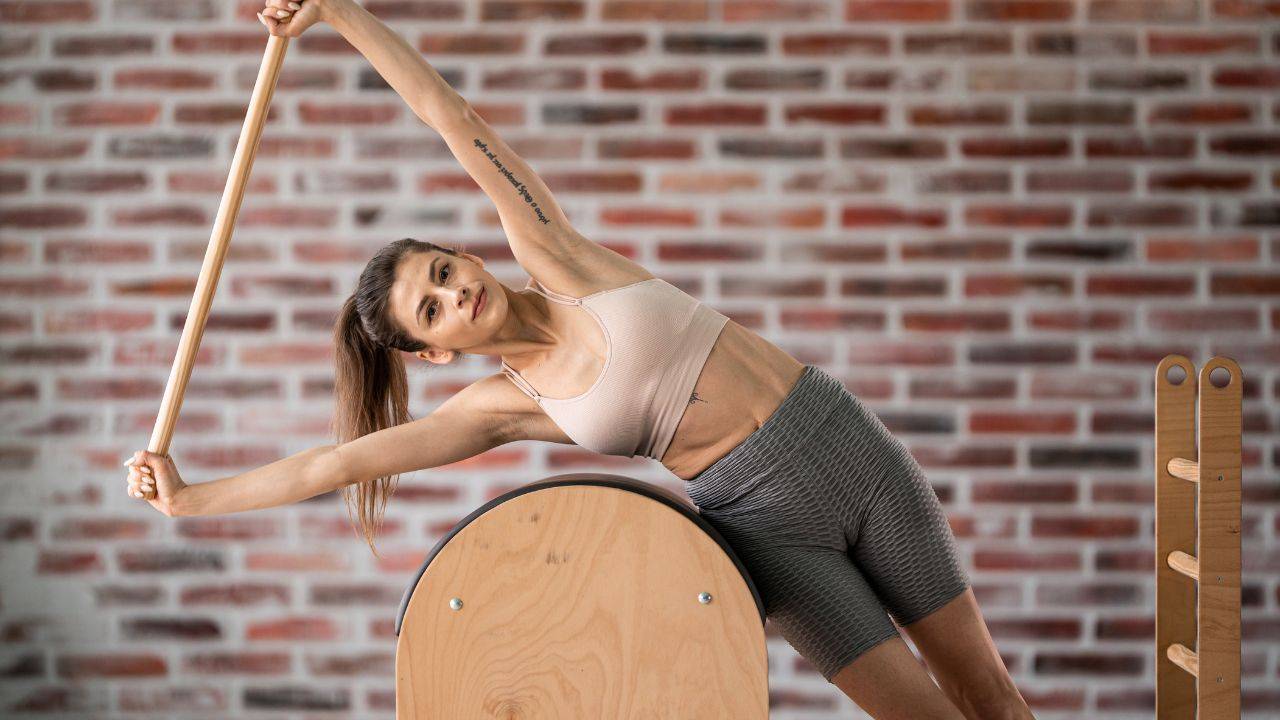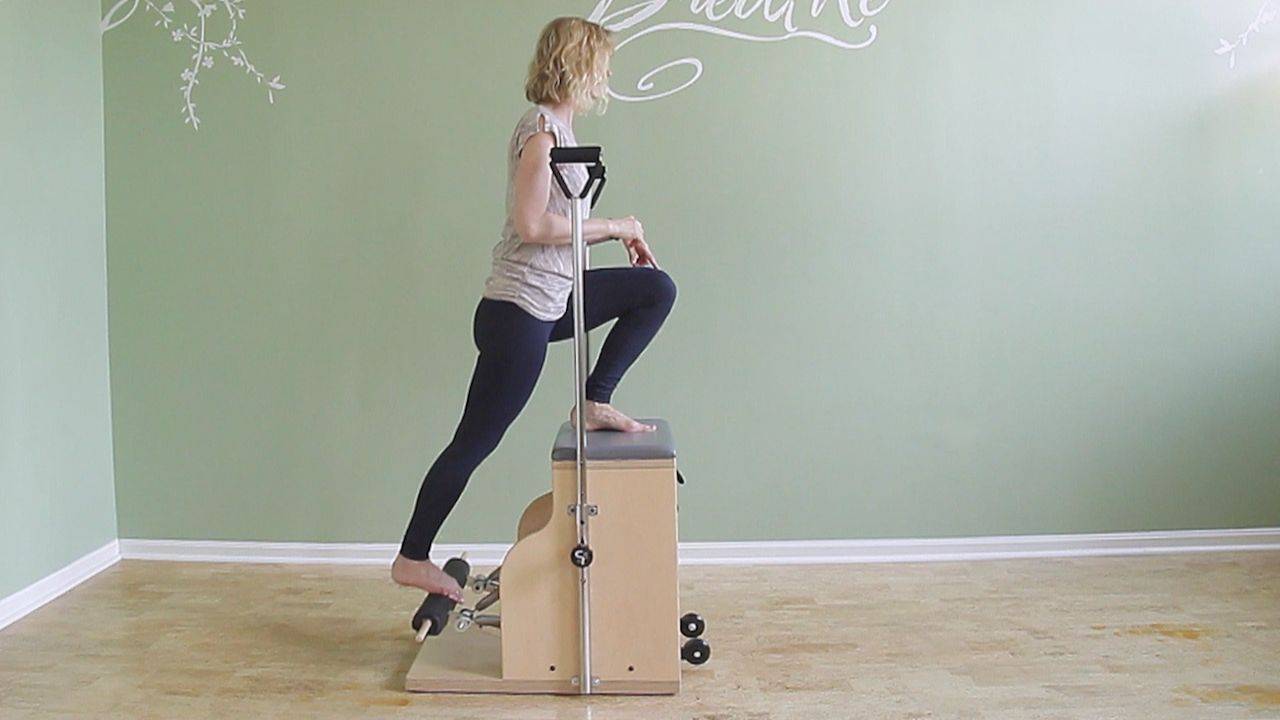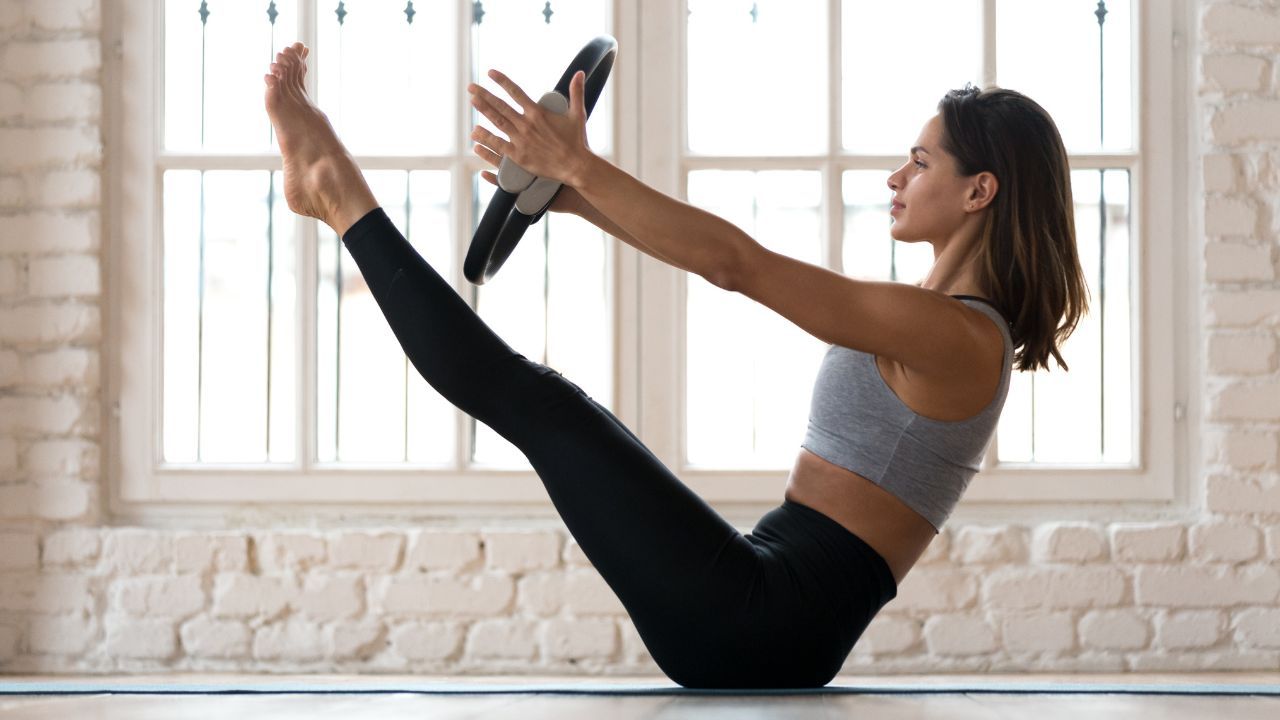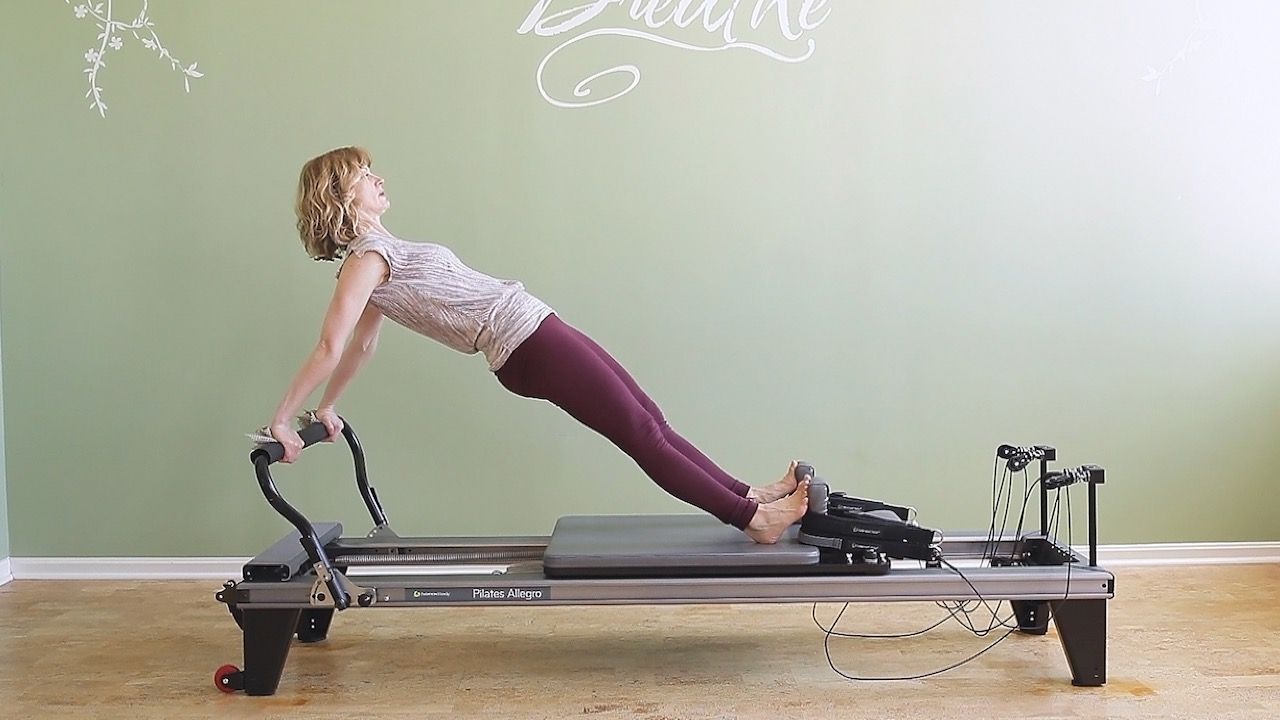Constructive Rest Position | On the Mat, Spine Corrector and Cadillac
Aug 14, 2019
Rather than asking who has experienced low back tightness before, I should really poll "who hasn't". Fewer virtual hands will go up. Muscle tightness or even spasms are, unfortunately, an all too common occurrence these days. It can come on suddenly and range from mild discomfort to severe pain. Who knows what caused it, all you know is that you want it to stop!
Especially among Pilates aficionados, cramping hip flexors are a common side effect of predominantly flexion-based classes with way too many exercises in a supine position.
Constructive Rest Position - also known as Active Rest - comes to the Pilates world from the Alexander technique, and is being used to release excess tension from the body, specifically from the psoas muscle. It's also a great way to release stress from the body-mind.
It might feel even better if you rest your lower legs onto a box or your sofa at home. Basically any position where you're lying supine (on your back) and position your hip and knee joints in a supported, passive 90-degree position, helps take the pressure off the lumbar spine as well.
If your legs are on the seat of your couch, allow your knees to fall open if that feels good.
On the mat, on the other hand, it might feel better to let your knees fall inward (it's okay if they touch). They will look slightly knock-kneed. This way they can lean on each other, which requires less or no muscle engagement.
If you have a Spine Corrector, you can use that to "upgrade" your Constructive Rest Position in the Pilates studio.

Unless you're Polestar Pilates certified, you might not be familiar with 90/90 on the Cadillac (aka Trapeze Table). It is my absolute favorite exercise for releasing a tight low back that's in spasm. The gentle traction provided by the springs allows the muscles around your hip joints to release and your psoas gets a break holding your body upright. Due to the psoas's attachment on the inside of the lumbar spine, you'll feel the release in the muscles that attach to that area: QL, erector spinae, lats, as well as the thoracolumbar fascia.
90/90 on the Trapeze Table also helps reduce muscle guarding - which is the body's attempt to protect you from further injury by tensing your muscles around an injured or weak joint.
You'll experience gentle traction in your spine, hip joints, knee joints, and ankle joints. When there is more space inside your joints, there is less friction inside them and they just feel better.
I know, the setup looks confusing! Inside the Pilates Encyclopedia membership, we describe it in full detail so you'll know exactly what to do. We also look at every detail, from head to toe, to help you or your student get the maximum benefit. Learn more...
Once you're in the position, all you have to do is breathe deeply and imagine all tension is melting away, like ice melting, and dissolving into the ground. Aahhh!
I recommend that you stay in this position for at least 10 minutes (longer is not a problem). It takes time for the mind to get ready to stop guarding the muscles around your back and hips. The first 5 minutes are often just mental preparation. The physical release in your muscles might only be felt after that. Make sure you don't give up before the exercise can have an effect.
How Long Should I Hold Constructive Rest?
If you are worried that your students will be bored if you "waste" 10 minutes of their session or class doing "nothing", here is a suggestion:
"Teach" the exercise once in your class or session and then ask your students to practice it at home either when necessary (when their back seizes up) or on a regular basis (for example, every evening after work, if your student is in an acute phase of a back spasm.)
You can also offer them to practice it before class. If they arrive at the studio early and have a few minutes before your class starts, this could be a constructive way 😉 to use that time.
Follow Up With Active Exercises
If you use Constructive Rest Position to "fix" your back pain, be aware that it's just the first step. Make sure to follow up with active exercises that correct unhealthy movement patterns. That's what probably caused the spasms in the first place. Unless you also practice exercises that strengthen weak muscles, lengthen short muscles, the spasm might return.
I'd love to hear from you: Do you practice or teach Constructive Rest Position? What's been your experience? Shoot me an email.










